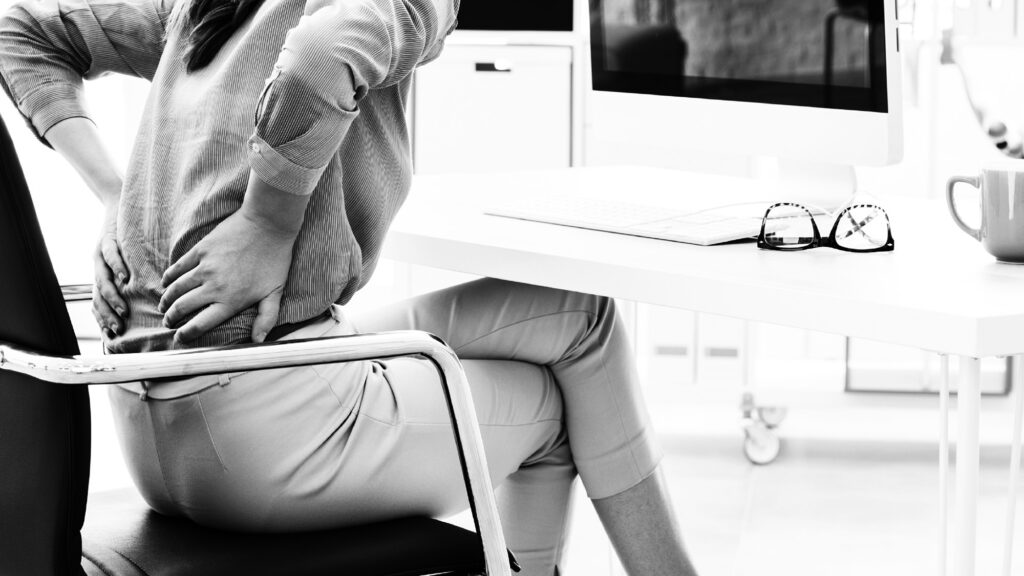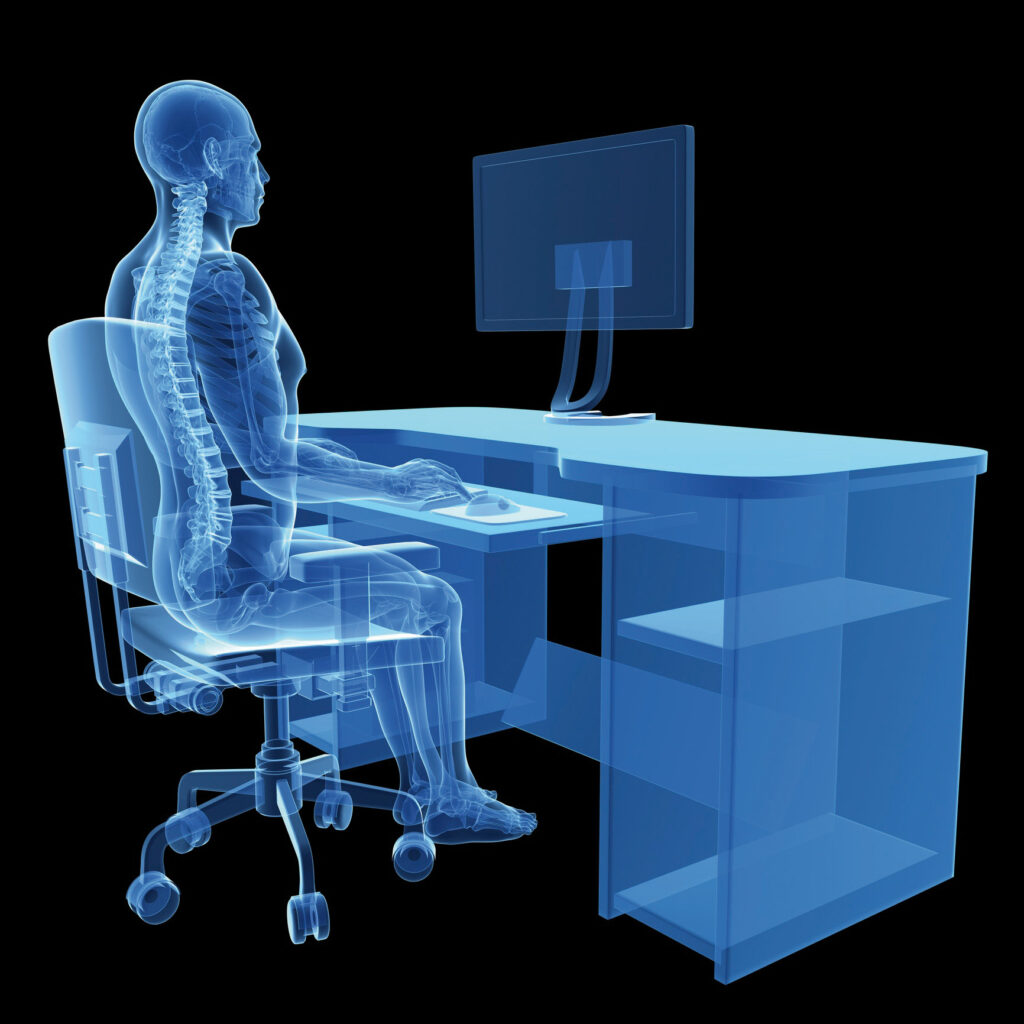Stay fit for purpose and flexible, to avoid injury
Tim Lynch discusses the benefits of looking after yourself, and how to stay fit for purpose to avoid injury during those adrenalin-fuelled call-outs.
From the archive: Mountain Rescue Magazine Summer issue 45, July 2013: Tim Lynch MSc(Chiro), DC, FRCC

The average team member is rarely couch-bound, preferring to spend his or her time in the great outdoors. But chances are that when that call-out message pings, you’ll be hurtling out the door from a standing start. Or, more likely, a ‘sitting’ start if the day job involves a computer screen. But how can we look after ourselves better to stay fit for purpose, flexible and strong for longer?
Do you service and maintain your car? Do you regularly get your teeth checked at the dentist? Do you get your back and joints checked? The answer to the first two is probably ‘yes’ and to the last one probably ‘no’.
Can you buy a new car? Can you get new teeth? Can you get a new back? Again, the answer to the first two is yes and the last one no. (Ok, you can get parts of a back — with some major surgery thrown in!)
So, which is more important to look after, service, maintain? At the time or writing, the statistics for low back pain read as follows:
- 80% of the population will suffer at some time in their life
- 49% of adults report an episode of lower back pain in a year
- £4.2 billion estimated cost to NHS of lower back pain
- Excess of £500 million cost to employers
- Five million estimated lost working days.
And this is just for lower back pain. Add in all other joints and you can see that musculoskeletal problems are a major problem. From a professional perspective, this often makes for frustrating reading as much of this is preventable.
No couch potatoes here
By the nature of the audience I’m writing for here, we’re not talking couch potatoes. Most of you will be fit, healthy individuals. But how many of you suffer with niggling aches and pains? A slightly dodgy knee here, an achey neck there? A few, I suspect. A complete guess, of course, but an informed one, based on patients I see regularly.
Our biggest problem is that we’re creatures of habit. We do the same things, in the same way, day in, day out, for years on end. We stress our bodies in the same way, day in, day out. Some of those areas eventually decide they’ve had enough — much as if you just kept driving your car without ever caring for it. I think we can all agree something would go wrong soon enough.
It also means we can become weak or deficient in certain areas which may equally have a negative effect in the long term. For example, I am aerobically fit and — for a man — pretty flexible. Sadly though, I am weak — a tough admission for any man! So, I need to focus on this last bit more to prevent the issues that this can cause.
Is lack of flexibility your downfall?
From experience, it is flexibility that is most people’s downfall when they are otherwise fit and healthy. We’re happy to climb a mountain, walk up a hill or ride our bike, but don’t fully appreciate and accept the knock-on effects of this, then wonder why we develop the various problems most of us encounter at some point.
Which leads me nicely to answering the biggest question I get asked. Why has this happened? Why have I got this lower back/hip/neck pain, or whatever else it happens to be? The simple answer is ‘life’, and all the stresses and strains that go with it. Of course, there are specific accidents and incidents that cause injury but most problems come out of the blue.
So, what does your ‘life’ involve? What can you do to look after yourself that bit better to help prevent/reduce the effects of it? You may well spend a reasonable amount of time out in the hills but most of us still spend far, far more time sat at our desks. Better sitting posture and moving more throughout the day are two of the single biggest things most people can do to help themselves. Nothing fancy, but extremely effective. For those of you with jobs involving bending and lifting, bending your knees more will be the biggest change you can make. Most of us know this but just don’t do it!

What sort of treatment?
As a chiropractor I help my clients when things go wrong (although we do promote regular check-ups, or ‘MOTs’, in the absence of any symptoms — precisely to keep it that way). For every patient, I try to give as much help and guidance as I can on how they can help themselves. If we all did even just a little bit, I am confident the reduction in suffering out there would be enormous. I’m talking literally a few minutes 2/3 times a week.
For those of you with niggling — possibly even quite severe — pains, it is important you go and get them examined and treated appropriately. Chiropractors are experts in this field but, of course, you could see an osteopath or physiotherapist.
Chiropractic and osteopathy are classed as ‘complementary and alternative medicine’ (CAM) and not always available on the NHS. Your GP may refer you to either for private treatment but you can arrange to see them privately yourself. Physiotherapy can be accessed through the NHS or privately.
Personal recommendation is important
My advice is to try, where possible, to get a personal recommendation, whoever it is you choose. Whatever you do, don’t be fooled into thinking the problem you’ve been suffering with for several weeks, months, or even years, will miraculously go away on its own. However, if you see the right person, in all likelihood it can be treated and make your life that much better.
My aim has been to educate and inform you on why you get aches and pains, what to do when things go wrong and, most importantly, what you can do to prevent things going wrong. We can’t prevent everything, but we can significantly reduce the chances.

Help keep your back ready for that call-out
At your desk/the computer
• Take time to adjust your chair, so your feet are flat on the ground and your knees bent, with a slope from your hips to your knees. You should end up with your hips higher than your knees and your eyes level with the top of the computer screen.
• Arms should be flat with your elbows level with the desk or table. If possible, use a seat with arm rests.
• Your keyboard should be directly in front of you.
• Take regular breaks. Never sit at the computer for more than 40 minutes and, when you take a break, walk around and stretch a little, do something completely different.
• Remove any obstacles from under your desk so you have enough leg room.
Using laptops and tablets
• If your laptop doubles as your ‘desktop’, invest in a stand or use a ream of paper or other object to ensure the screen is at eye level.
• On the move, take care not to cart too much unwanted stuff in your laptop bag or briefcase, adding extra weight for your shoulders and back to carry.
In fact, a rucksack-style bag (not unfamiliar!) is far better ergonomically, allowing for strap adjustment and provides more even distribution of weight across your back.
• If you’re travelling on the train — or as a passenger in a car — and must use your laptop, don’t sit for long periods doing this, as you are looking down onto the screen with your head unsupported.
Lifting and carrying
• Face the direction in which you want to carry the weight and always lift using a relaxed, straight back.
• Make sure your legs are at least your hips’ width apart with knees bent to maintain stability and keep head and shoulders directly above your waist.
• Avoid twisting or bending from the waist, which increases the stress on your lower back.
• Hug the load as close as possible to your body at hip level.
• Make sure you balance or secure the weight before you start moving.
• When you start to lift, a slight bending of the back, hips and knees is better than fully bending the back or fully bending the hips and knees.
• When lowering, face the place you have selected and lower the load slowly, bending your knees — never your back — and let your legs do the work.
Tim Lynch is a registered chiropractor with clinics in Manchester and Cheshire. He has a particular interest in sports injuries and is one of only a handful of chiropractors to have worked in Premier League football. He is also a Fellow of the Royal College of Chiropractors.